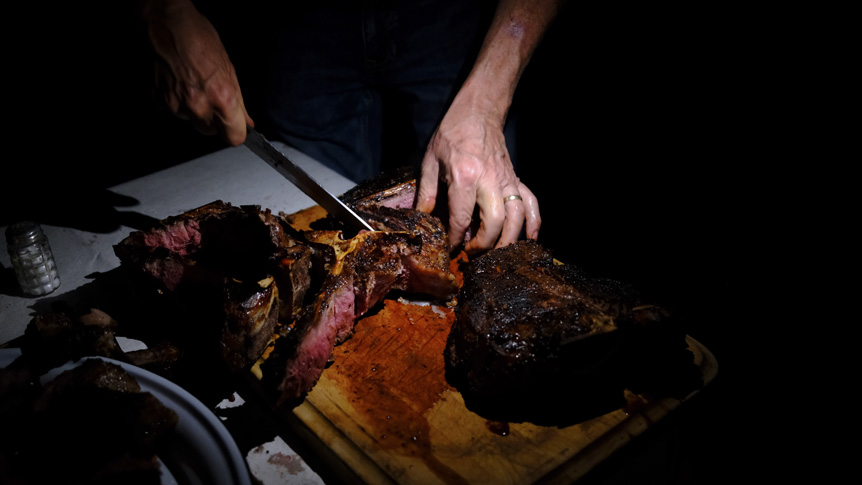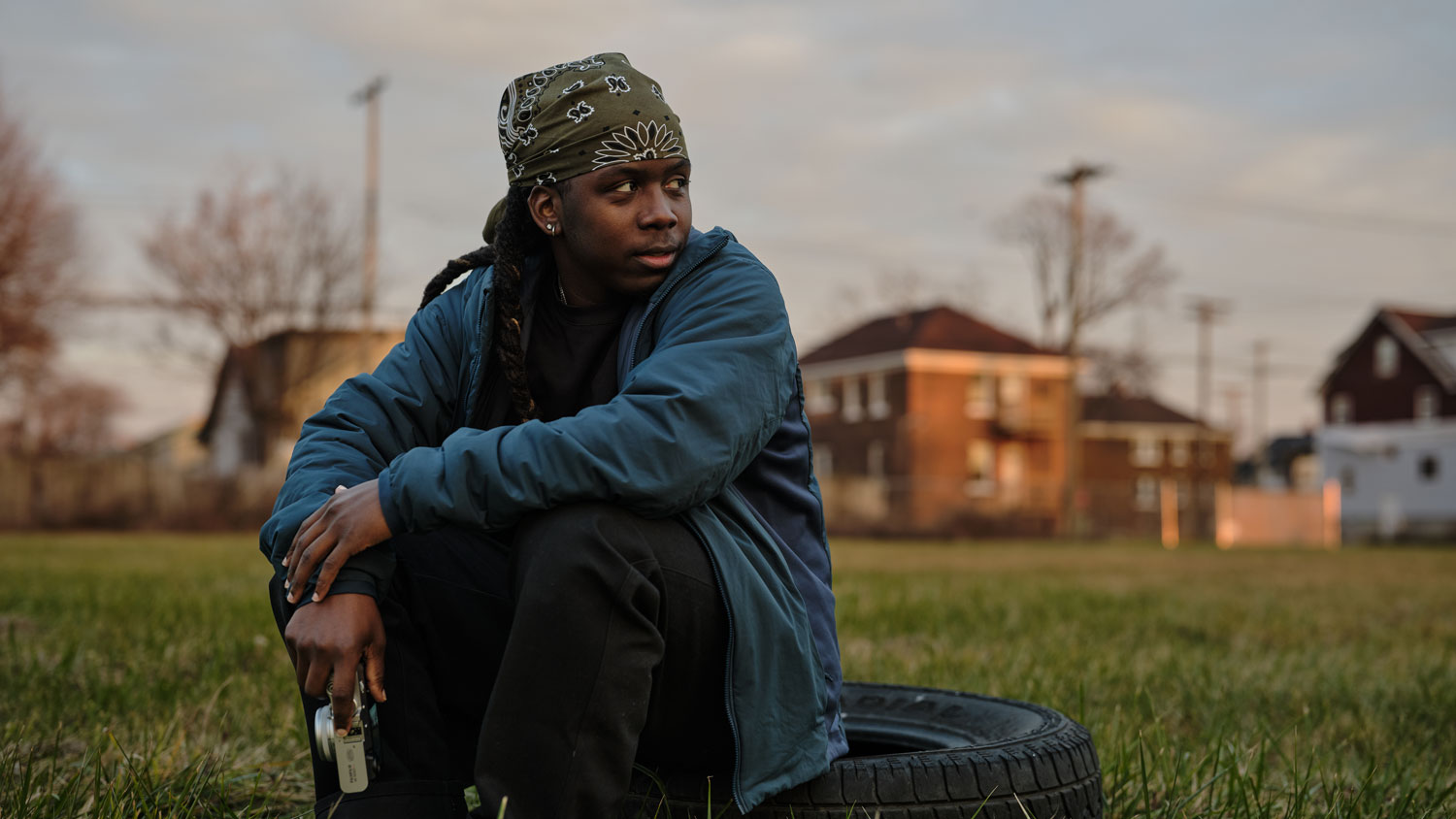
 6 minute read
6 minute read
Essential Food Photography Gear
Photographing food begins with a few simple creative tools. With the help of professional image maker Penny De Los Santos, we share exactly what’s needed to make good food photography
If you’re wondering how to make good food photography, you’re in the right place. Like any genre, there’s much to learn – but it all begins with setting yourself up for success. We’re about to deliver details on the essential gear, thanks to compelling insight from a truly polished professional.
Culinary photographer Penny De Los Santos joins us to share her wisdom, fresh off an exciting project documenting the food culture of South Texas’s cattle ranches using FUJIFILM X100VI. You can read more about her storytelling drives and the camera’s exceptional performance in dedicated articles. For now, let’s build a kit bag.

Photo 2023 © Penny De Los Santos | FUJIFILM X100VI, 1/60 sec at F2, ISO 800
The Best Camera for Food Photography
There’s no single best camera for any genre of photography, rather a selection that house the most beneficial features. In wildlife photography, it may be those with the ultimate autofocus performance, whereas street photography might place most demand on physical design. The best camera for food photography, however, is one with high resolution.
In what’s typically a slower-paced genre, quality is king. Food photographers seek detailed, mouthwatering renderings of cuisine – that’s before mentioning that any images created may well be used in print or other large-scale campaigns.
“Image quality is absolutely an important part of the detailed stories I tell,” explains Penny, referencing her use of the 40.2-megapixel X100VI. “Plus, I can be in many visually challenging situations and the camera sensor will allow me to document what’s happening perfectly. I don’t have to change an environment when I can push my camera to adapt instead.”
So, limit your search to cameras with high resolution. From there, you can narrow this pool based on personal preferences – such as physical size and other internal specifications – until you find the perfect choice.

Photo 2023 © Penny De Los Santos | FUJIFILM X100VI, 1/80 sec at F2.2, ISO 2500
The Best Lens for Food Photography
With a camera selected, it’s time to choose a lens for photographing food. Again, you’ll want to focus on the type of optic that lends its features to the genre best, rather than listening to advice on one particular option.
As we see it, the best lens for food photography is a prime – more specifically within the standard focal length range. While a zoom lens is practically beneficial, it can be creatively stifling. By staying in one spot and achieving different frames by zooming, you miss out on the opportunity to explore your subject deeply. With a prime lens attached to your camera, you can achieve those same wider or closer frames by simply moving your feet. In doing so, it’s almost guaranteed you’ll see something in a subject that you wouldn’t have from one fixed location.
“A fixed-focal-length lens is the only way to photograph, if I’m honest,” Penny reveals. “Changing your perspective around a subject is key in finding images that tell the story. Having a fixed focal length is a wonderful way to exercise that skill. It’s so freeing, and I love that it lets you not worry about switching to a different, right lens.”
Within FUJIFILM X Series, popular standard primes include FUJINON XF23mmF2 R WR, XF30mmF2.8 R LM WR Macro, and XF33mmF1.4 R LM WR.

Photo 2023 © Penny De Los Santos | FUJIFILM X100VI, 1/400 sec at F2, ISO 100
Food Photography Lighting
Many food photographers utilize artificial lighting, but these are fairly expensive and complicated tools. It’s important to remember this isn’t the only option. Not only do Penny’s images embody the professional standard natural light can be used at, but she provides a means to control it, too.
“One of the most important bits of food photography gear you can have is a reflector. That can be bought, or you can simply use a piece of white, silver, or black card to control the bounce of natural light,” Penny advises.
“I always look for natural light first because it’s the most beautiful option. It’s usually easy to find a source, whether from a window or a propped-open door. Then, oftentimes, a white fill card can be angled at shadows to reflect in more light, or a black card can be used to achieve the opposite effect. So, carrying a reflector is always important.”

Photo 2023 © Penny De Los Santos | FUJIFILM X100VI, 1/250 sec at F3.2, ISO 500
Culinary Photography Camera Support
Essential gear item number four is as simple as it comes: the humble tripod. Useful across most genres, food photography is no exception.
“A tripod is always a smart thing to carry with you when photographing food, just to make sure the frame is steady,” she states. “You can free yourself up to style the food a little bit if needed, without having to put down the camera then reset your composition after.”
Thankfully, with the lightweight mirrorless cameras of today, your choice of tripod can be comparably light and easy to carry. It’s the largest item on this list, but still fits inside a small backpack with ease – or could even be attached to one.

Photo 2023 © Penny De Los Santos | FUJIFILM X100VI, 1/250 sec at F2, ISO 100
Photographing Food with Human Subjects
While not part of your photography gear, Penny notes that human subjects are a valuable part of food photography. In her own documentary style, people are a naturally occurring feature in almost any frame. But even in a still-life-focused approach, a stand-in can be sourced with ease.
“A human subject can’t be overlooked when you’re photographing food,” Penny affirms. “Don’t just think about the food, think beyond the food. Think about the hands making it and the people gathering around the table. The moments that happen around the food can only contribute to helping people understand, from a visual standpoint, the story of the meal.”
So, ask a friend to step into your styled scene, or set a timed shutter release on your camera and get in there yourself. There’s also the option of doing as Penny does and seeking out those who work with food for the most authentic results.
That’s it! Our list of essential food photography gear. Many will expand upon what’s here as they seek new visual heights, but many – like Penny – create astounding professional imagery with little more than this list contains.
Read more about Penny’s project, or browse all the content on Exposure Center for education, inspiration, and insight from the world of photography.
For more information about the camera Penny used for her project, shop X100VI now or read the full specifications here.


























































